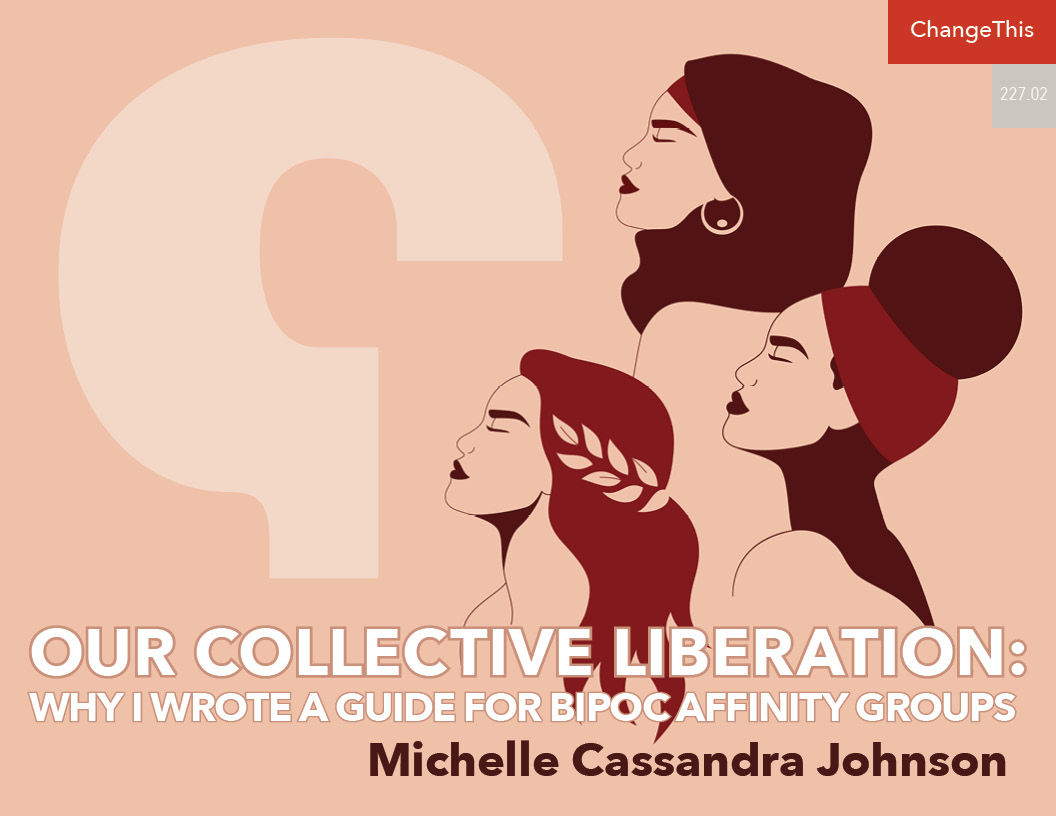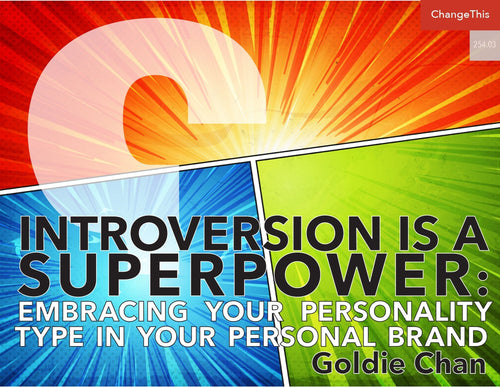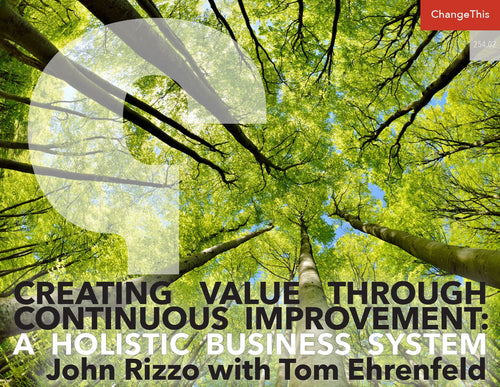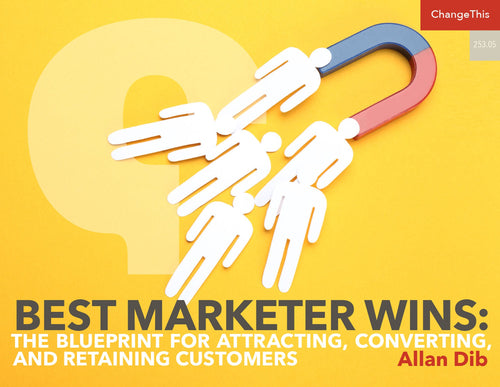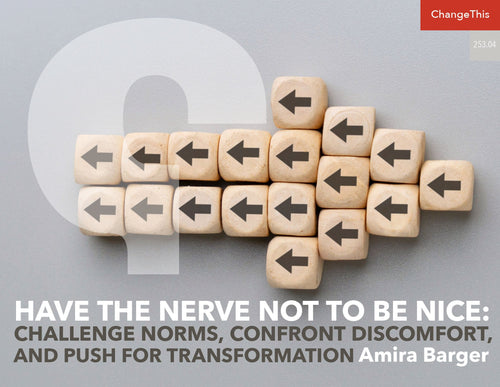Our Collective Liberation: Why I Wrote a Guide for BIPOC Affinity Groups
I attended my first dismantling racism training in 1999.
At the time, I was working as a clinical social worker at a high school and served on boards of directors of many nonprofits, including the North Carolina Lambda Youth Network.
The organization sent all of its board members to dismantling racism training at a time when these trainings weren’t readily available, social media blasts about performative allyship were nonexistent, and the collective consciousness about the insidiousness and horror of white supremacy and racism hadn’t been raised via numerous videos of Black people being murdered by the police.
I arrived in Charleston, South Carolina, on a plantation where sixty people would gather over the course of a long weekend to deepen their understanding of personal, institutional, and cultural racism. It felt odd to be on a plantation while engaging in anti-racism work, and also interesting. The ghosts of my ancestors who were enslaved and their slave masters were with us mingling together as the truth about racism surfaced.
I found myself in a room full of people—half of them were Black, Indigenous, and People of Color (BIPOC), mostly Black, and half white. Spiritual leaders, LGBTQIA+ activists, and community organizers gathered in a circle to work together and across lines of difference to create racial justice.
I had come to this training as a Black woman who had grown up in Richmond, Virginia, attending private school and a predominantly white college. While I understood racism and never denied it was real or was happening to me, before entering the circle I didn’t have the language to understand my experience of racism, nor a space to unpack how racism had impacted me so deeply and profoundly.
We sat in a circle, moved through different activities, developed a shared language, reviewed the History of the Race Construct, and had heated and generative discussions. At a certain point in the workshop, I found myself consoling a white woman who was crying because of her new realization: she was implicated in perpetuating white supremacy and racism. She felt guilty and confused. White supremacy had duped her, too, making her believe she was unique and special just because—not because of the fact that she benefited from white privilege and was afforded opportunities, wealth, access, and validation because of her whiteness. My humanness and compassionate nature were what guided me, and I didn’t quite yet understand how my cultural conditioning and internalized racial oppression contributed to my caretaking role of her at the moment.
One of the facilitators, Tema Okun, looked at me as I consoled the white woman and said to me, “She can take care of herself.” Tema said this with firmness but care.
I was a bit confused, and it took a little while for me to truly understand what was going on. Yes, part of my reaction stemmed from my compassionate heart, but part of it was definitely from the conditioned response that dominant culture and whiteness had taught me to take care of white people, protect their feelings, and make them feel comfortable.
As part of the training, we separated into groups by race. There was a white caucus and what was then called a People of Color (POC) caucus. When this idea was introduced to me immediately before we went to our caucuses, I was a bit uncomfortable.
I didn’t understand the purpose of separating, and I believe I was also wondering about how we would come back together. I knew we weren’t having the same experience of living in a white supremacy culture, and I was confused about what we would talk about in a POC caucus that would be different than what would be talked about in the white caucus. I also sensed deep discomfort from some of the other participants—both white and BIPOC—in the training. So much of racial injustice comes from separation, isolation, othering, and division, yet we were asked to separate once again.
The group facilitator of the POC caucus, Bree, was a biracial woman who identified as Black. She opened our group by saying, “This is my favorite part of the training; it is wonderful to be here with you all.” We proceeded to go around the circle for a check-in where each participant was invited to share how they were feeling.
I don’t know what I said when it was my turn. I have no recollection because I believe I was in deep study, investigating the makeup of our group, which included people from various racial and ethnic backgrounds, while listening to people’s anger, sadness, and frustration about how systemic racism affected them.
The POC caucus was the first time the concept and experience of internalized racial oppression were introduced to me. It was defined as the way BIPOC people internalize negative messages from the dominant culture about being BIPOC. Self-doubt, self-hate, powerlessness, hopelessness, addiction, violence, and depression manifest as a result of internalization.
It was further discussed as a manifestation of white supremacy and racism, which might cause BIPOC people to oppress themselves or other BIPOC people due to what dominant culture has taught them about who they are and what it means to be a BIPOC person.
Last, it was discussed as the way BIPOC people perpetuate racial oppression against themselves and others, replicating the divide-and-conquer strategy of white supremacy, furthering a divide among BIPOC people, and in turn allowing white supremacy to thrive.
Upon my hearing this definition of internalized racial oppression, things started to click in place in my mind, body, heart, and spirit.
I finally began to understand why I wore my hair straight, code-switched, and dressed the way I did. I understood why, when I saw other BIPOC people, I would at times have negative feelings toward them, or worse, blame them for their circumstances and suggest they could do better when in actuality they were up against a system designed to undo them.
I understood why my mother sent me to a private school because she thought I would “get a better education.” She sent me to this school and would also send me to places such as church camp or ballet class where Black people were the only people in attendance. I was made fun of time and time again in these spaces for “talking white,” “dressing white,” and “thinking I was white.”
I understood that I believed white was better because white supremacy had taught me so and made me believe assimilation was the answer.
While holding these things in my mind, as puzzle pieces started to come together and click into place, I also knew that injustice was real and that whole groups of people were discriminated against for identities they embodied. I knew that I had been discriminated against for my race by white people. I was aware that there wasn’t a level playing field, and I was angry at how BIPOC people were treated. I knew I had a role and work to do to fight oppression, and I was committed to making change in my community and beyond.
The duality of sitting with how I had perpetuated racial oppression against other BIPOC people and myself and being committed to fighting for racial justice created dissonance inside me. I sat in the POC caucus with a lot of questions about how I had been conditioned and trained to be as a Black person by culture, my mother and family, my white friends, my white partner, and the Black children I grew up with who would make fun of me because I didn’t fit the stereotypical image of what it meant to be Black.
The experience of being in the POC caucus left me feeling curious about the work I, and we as BIPOC people, needed to do to heal the wounds and scars created by white supremacy and internalized racial oppression.
After meeting in our caucuses, and later on that evening, we gathered together again as one large group for cultural sharing, which was quite a cultural experiment.
The LGBTQIA+ activists shared about their work while Black faith leaders shared how they were faced with the dynamics of intersectionality and things that made them feel quite uncomfortable. I saw sexual orientation and gender identity bump up against whiteness and racism. The white women’s rights activists were faced with anger from Black women elders in the group because it was difficult for the activists to hold racism and sexism at the same time while Black women had compounded oppressed identities by being Black and women. This experience raised questions about how we work across various lines of difference and maintain our shared humanity.
Over the course of the weekend, I learned not only about white supremacy and racism but also about what we internalize from the dominant culture about who we are, and I learned about the harm that this causes to us as individuals and to the collective. I left the training feeling excited and eager to share what I had learned with my partner, friends, and coworkers.
I went back to work on Monday feeling like a layer of who I was had been exposed because I understood more about who I was in terms of race. I forgot that the rest of the faculty at the high school had not attended the workshop and therefore hadn’t had the same experience. It felt disjointed to want to share new information about the world, white supremacy, and racism while not having a place to share it.
Time passed and I noticed that the curiosity I continued to experience about the training was significant; I felt compelled to learn more from the facilitators about how to become a dismantling racism trainer.
I followed up with Tema and Bree. I met with Tema in Durham, North Carolina, and we talked about what it might be like for me to “train up” as a dismantling racism trainer. After my meeting with Tema, she introduced me to Kenneth Jones, another trainer and the cofounder of Changeworks, an organization that led anti-racism trainings in communities and organizations. Kenneth’s fire, passion, and humor sold me on becoming a dismantling racism trainer.
For a couple of years, I attended countless dismantling racism trainings—observing, taking notes, and learning about facilitation in emotionally charged places. I sat in caucuses and witnessed what it was like to come back together as a large group after having been separated by race. I facilitated sections of the training curriculum and after a while was able to co-facilitate with our team of trainers.
I remember the first time I co-led a POC caucus with Kenneth. Bree’s words came back to me: “This is my favorite part of the training.”
At that moment, I offered these same words to the group. I understood that as BIPOC people we were on the receiving end of racism and were living in a culture that was hell-bent on annihilating us because of our race. I understood how whiteness could suck the air out of the room and center itself instead of caring for the people who have been most harmed by racism—BIPOC people. I understood why we needed a place to cry, scream, and heal.
It all became clear to me, and from that point on, my favorite part of each training was the POC caucus. Even as a facilitator, it was the space I went to for healing and validation.
I’ve been learning about and leading dismantling racism work since 1999. I have worked in organizations, corporations, and communities, chipping away at white supremacy and its wrath. I understand white supremacy and its most effective strategy: divide and conquer. I have experienced BIPOC and white people taking collective action in spite of white supremacy and racism, in spite of internalized racial superiority and oppression.
I have facilitated countless BIPOC caucuses holding people’s hearts as they try to unravel the toxicity white supremacy breeds. I’ve worked through moments of conflict and growth in caucuses.
I have sat in my own space of inferiority and doubt due to what white supremacy says about who I am, and I have remembered who I truly am—a whole, divine, beautiful being, committed to collective action and our collective liberation.
The need for a resource and guide to support BIPOC in sharing space together and centering their own healing is long overdue.
A Space for Us: A Guide for Leading Black, Indigenous, and People of Color Affinity Groups is vital and necessary as we navigate the resurgence of the Black Lives Matter movement while white-bodied people try to figure out their right role in interrupting and dismantling racism. We continue to need spaces to heal and be as we are. We need spaces to witness one another and call each other in when internalized racial oppression has made us forget who we are.
I wrote the book from my experience as a Black person and someone who is at the bottom of the racial hierarchy. If you are biracial or mixed roots, please know that some of what I offer in the book may resonate and some of it may not. Depending on your lived experience and proximity to whiteness, you may also choose to read a complementary resource focused on leading affinity groups for folks who identify as biracial or mixed roots.
If you are more proximal to white and hence to social and institutional power because of your skin tone, or if more often than not people assume you are white (sometimes referred to as white-passing), please read these words with an understanding that your experience as someone who is more proximal to power—because of the ability you have to pass as white if you choose—is different from my identity as a Black person.
Because of my skin tone, there is no question that I am Black, which means I am racialized in all settings and all of the time. Because I do not have the lived experience of being able to pass as white and as a Black person I am not adjacent to white in the racial hierarchy, I understand that my experience as a Black person is vastly different from your experience.
I ask you to consider if you are the right person to lead a BIPOC affinity group; if you feel it is aligned for you to lead this kind of space, consider how you will speak to your identity in a BIPOC group. In the guide, I will share about how to hold space and facilitate, and I will share about holding a BIPOC space versus holding a space for a specific racial identity or ethnicity.
If you are white and have chosen to read the book, I invite you to ask yourself why you have chosen to read it. If your reason feels aligned with values and principles rooted in dismantling racism, then you might choose to continue reading. Please remember that I wrote A Space for Us for a BIPOC audience and from my experience of being Black. I didn’t write this for white-bodied people.
If you are white, there are books and resources available for you to learn more about whiteness and how to hold space for other white-bodied people. A Space for Us is not one of these resources. I wrote this book for BIPOC people. We need a space for our own healing that isn’t shrouded by whiteness, white-bodied people, and white supremacy.
A Space for Us is an offering from me to BIPOC people who want to work together for our sovereignty and liberation. The guide does not contain all of the answers. It does include tools, resources, validation, and a framework to better understand what white supremacy is doing to us as BIPOC people and in turn what we are doing to one another.
It is a guide that my heart hopes is useful to many and helps us illuminate the pathway to freedom.
Excerpted from A Space for Us: A Guide for Black, Indigenous, and People of Color Affinity Groups by Michelle Cassandra Johnson (Beacon Press, 2023). Reprinted with permission from Beacon Press.

